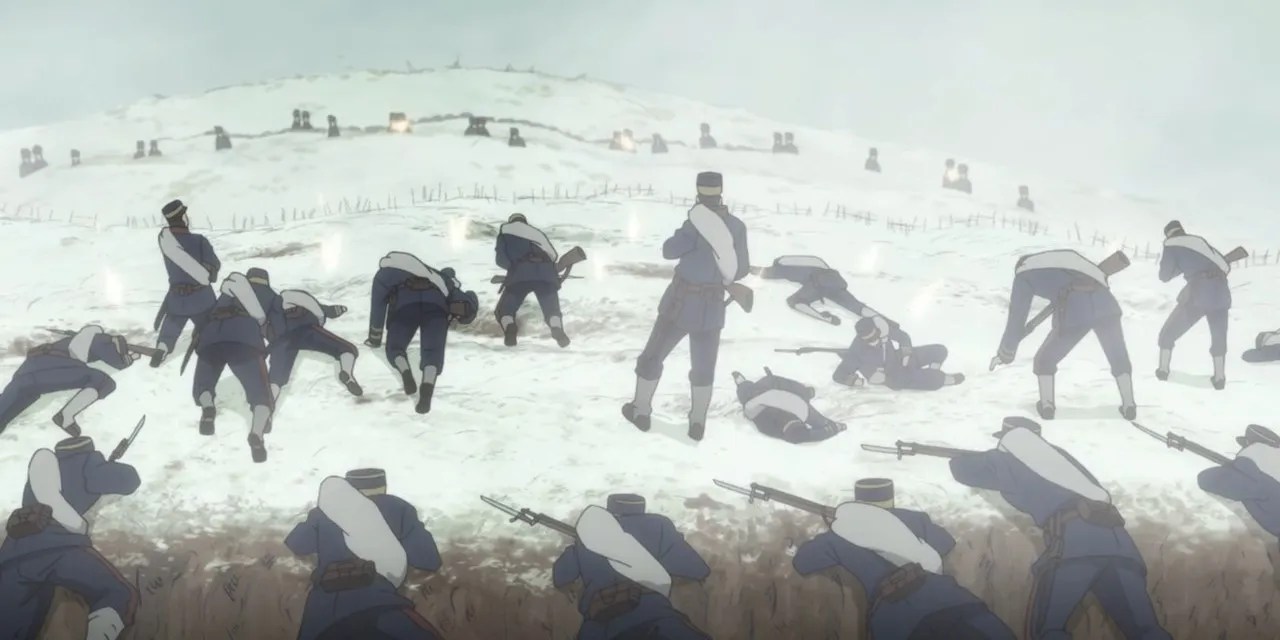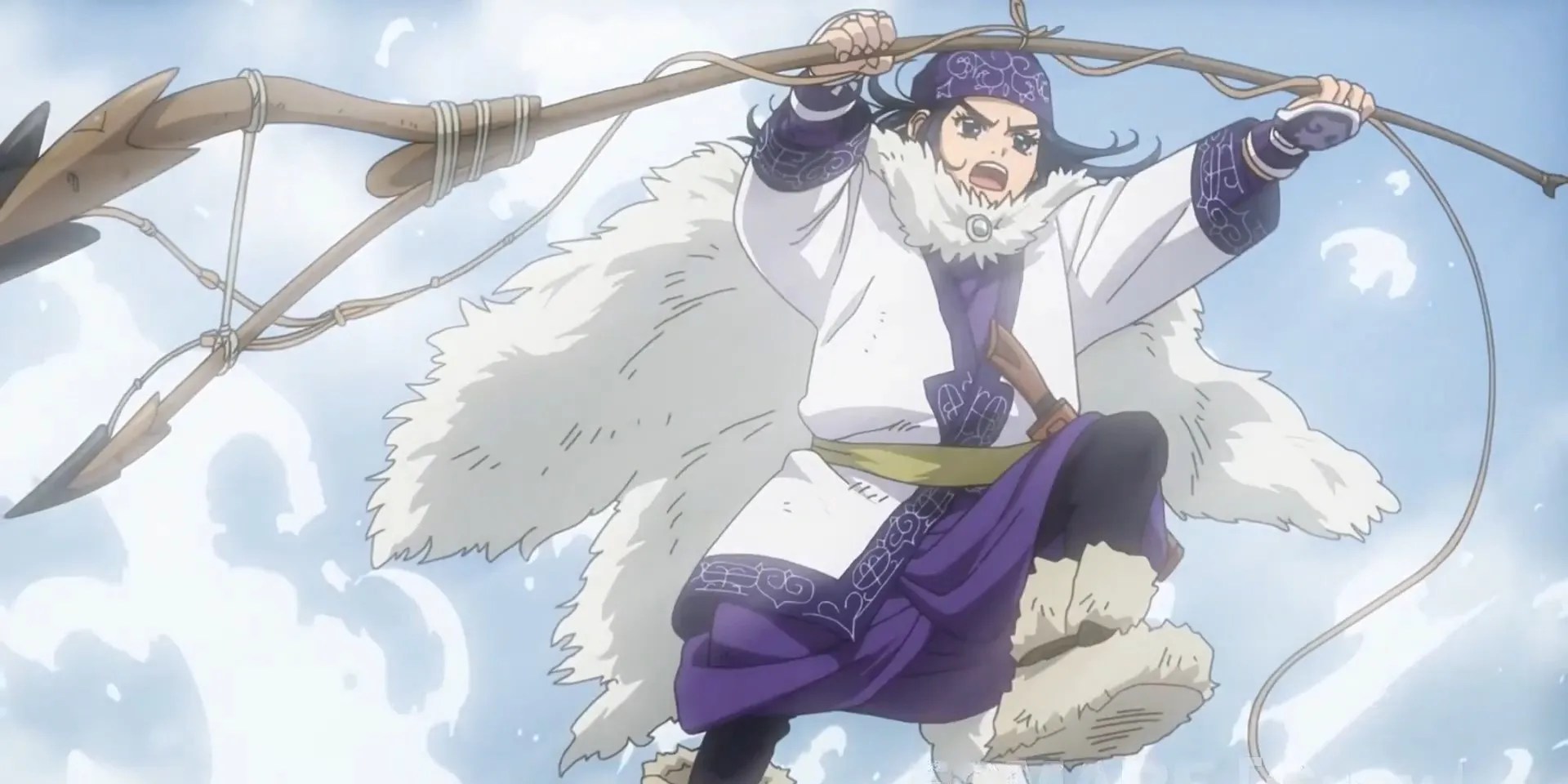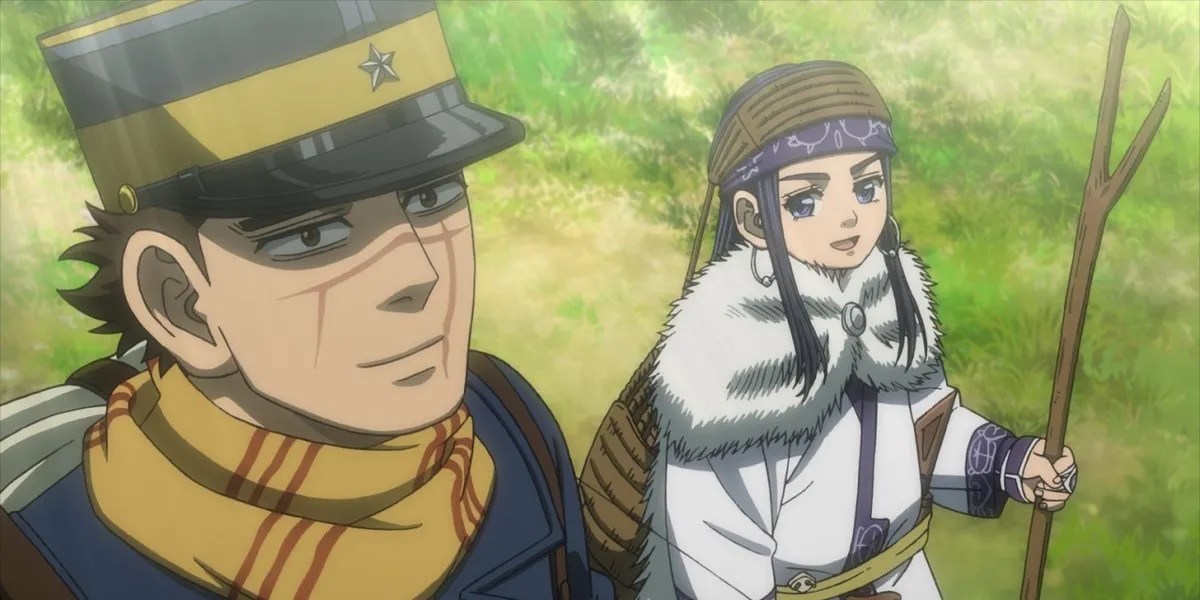‘Golden Kamuy’ transports us to early twentieth-century Hokkaido in the aftermath of the Russo-Japanese War, where various groups search for a hidden treasure. The treasure’s map is encrypted and tattooed on the bodies of a group of escaped prisoners. Saichi Sugimoto, a war veteran, teams up with a young Ainu girl named Asirpa to work with the escaped convicts and locate the treasure, which is said to contain a huge cache of gold. The Netflix show is based on the anime of the same name, which in turn is inspired by Noda’s eponymous manga. The series seems to take us back in time to the harsh landscapes of northern Japan. The show’s highly detailed backdrops, characters, and politics seem to suggest that it may have taken heavy inspiration from history.
Golden Kamuy: A Fictional Story Inhabiting a True Setting
While the setting of ‘Golden Kamuy’ is based on the historical geopolitical landscape and cultures of northern Japan, its story and characters are largely fictional. Satoru Noda is known for his detailed study of the period, and the production team behind the show continues this attention to historical detail. Each character, their motivations, and even the main quest of the story are rooted in the political upheaval of the Meiji Restoration and the carnage of the Russo-Japanese War.

The Meiji Restoration, also known as the Japanese Revolution, serves as a significant backdrop for the series. This period marked the overthrow of the Tokugawa shogunate and the restoration of imperial rule under Emperor Meiji. It brought about sweeping reforms aimed at modernizing Japan, including the abolition of the samurai class, the establishment of a centralized government, and the adoption of Western technology and institutions. Ironically, this was done with the goal of decreasing Western influence on the nation, securing foreign powers’ respect for Japan as an equal, and reaching better trade terms as a result.
The nation’s moment to gain said recognition came with the beginning of the Russo-Japanese War. Equipped with modern weaponry and a powerful navy, the Japanese dominated the seas and secured a blood-soaked, pyrrhic victory on land. One of the most devastating battles was that of Hill 203, which led to the loss of 8,000 Japanese soldiers in the final assault alone. When a peace treaty was signed between the warring nations with American President Theodore Roosevelt presiding as a broker, Japan received land but no remunerations for their losses. This led to a devastated economy, and the war veterans became resentful of the imperial government.
Having seen the horrors of war and so many of their comrades die on the battlefield, many of the veterans developed survivor’s guilt, a theme which is strongly reflected in the show. Saichi Sugimoto himself is a veteran of the war and the battle of Hill 203. Former soldiers of the 7th division, which sustained the heaviest losses in the conflict, are led by First Lieutenant Tsurumi in ‘Golden Kamuy.’ Tsurumi wishes to seize the gold and create his own country, seceding from the government which betrayed its soldiers during the war.

Hokkaido, the northern and second largest island of Japan is the setting for most of the story. Due to its harsh terrain and weather, the region was not heavily integrated with the empire in the early twentieth century. The settlers from mainland Japan would trade with the local Ainu who knew the lay of the land and were master survivalists. However, following the tensions and conflict with Russia, Imperial Japan began proactively assimilating the Ainu and mining the region for its mineral resources, especially gold.
Asirpa’s father was one of the gold miners who initially discovered the Golden Kamuy but was murdered by a fellow miner. The series sheds light on Ainu culture, traditions, and struggles, highlighting their marginalization in the face of Japanese colonization. Asirpa serves as a bridge between the Ainu and Japanese worlds and provides valuable insights into Ainu customs and knowledge. The voice actors portraying Ainu characters in the anime even made efforts to adopt the Ainu dialect into their Japanese voice acting.
Furthermore, the production team assigns separate animation designers to each area. A particular designer will work only on firearms, modeling them with historical accuracy. Others would each focus on their respective visual area, from animals to props and structures. Such an approach has ensured a high level of production quality and accuracy when it comes to making period-accurate backdrops and equipment.

Saichi Sugimoto is a composite character named after Satoru Noda’s war hero great-grandfather and inspired by Hiroshi Funasaka, who is often called Japan’s greatest soldier. He raided enemy camps while enormously outnumbered, survived a grenade blast and being shot in the neck, earning the nickname immortal. While not necessary, understanding the history behind the show adds tremendous weight to the dialogue, references, and motivations of the characters and the story. Despite being fictional, the story and characters of ‘Golden Kamuy’ are deeply tied to the real-world historical setting they inhabit.
Read More: Best Adult Anime of Netflix


You must be logged in to post a comment.